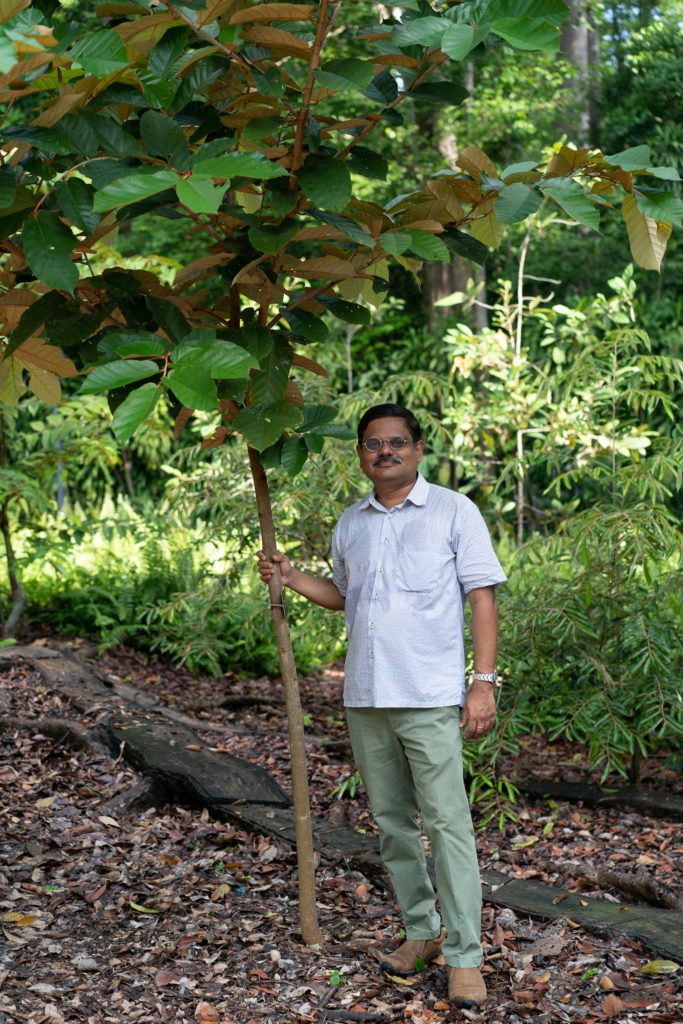It is great to see Dr Santhana Krishnan Ganesan’s revision of the genus Pterospermum has just been published in the Edinburgh Journal of Botany [click here].

Ganesan, from Singapore Botanic Garden, first came to RBGE as an MSc student and undertook a taxonomic study of the genus Firmiana (Malvaceae) with Dr Peter Wilkie of RBGE. After completing his MSC with Distinction, he spent a few years back in Singapore before returning to RBGE to start his PhD (again with Peter) but this time to undertake a taxonomic revision and molecular phylogenetic investigation of the genus Pterospermum (Malvaceae).
What was quite unusual about Ganesan’s taxonomic research was that no revision of Pterospermum (first published in 1791) had ever been undertaken and so for the first time he brought together all of the information currently available on all of the species from the Malesian region (the biodiverse area composed of Brunei, Malaysia, Indonesia, Papua New Guinea, Philippines, Singapore and Timor-Leste). By reviewing this information knowledge gaps were identified and used to focus his research activities. In his newly published revision 26 species are now recognised, six of which are described as new to science.
Pterospermum is a genus of tropical trees that extends from India to the Moluccas. Species numbers ranged from 18-40 but there was no general consensus on the total number of species in the genus and no revision of the genus had ever been undertaken. The trees are used for timber and the flowers of some species have potential anti-diabetic properties. Some species occur on limestone and are potentially drought adapted and as such may have wide use in urban forestry and potential for use in reforestation activities. Other species have ornamental potential because of their large, showy, fragrant flowers and attractive leaves.
The discovery and description of new species is often the headline grabbing aspect of our taxonomic work but just as important is the review of all of the information associated with the species already known to science. This allows a critical assessment of differences and similarities between species across their distributions so that species limits can be amended, descriptions improved, distributions better understood, identification keys produced and assessments of threat to species’ survival made.
This taxonomic work has allowed up to date evidence based International Union for Conservation of Nature (IUCN) conservation assessments to be made and has highlighted that Pterospermum elmeri, P. glabrum, P. havilandii, P. megalanthum, P. parvifolium (if still extant), and P. subpeltatum are all Critically Endangered in the wild largely as a result of deforestation. These assessments are an important first step in highlighting the threat to these species and in developing measures to mitigate the risk of extinction.
